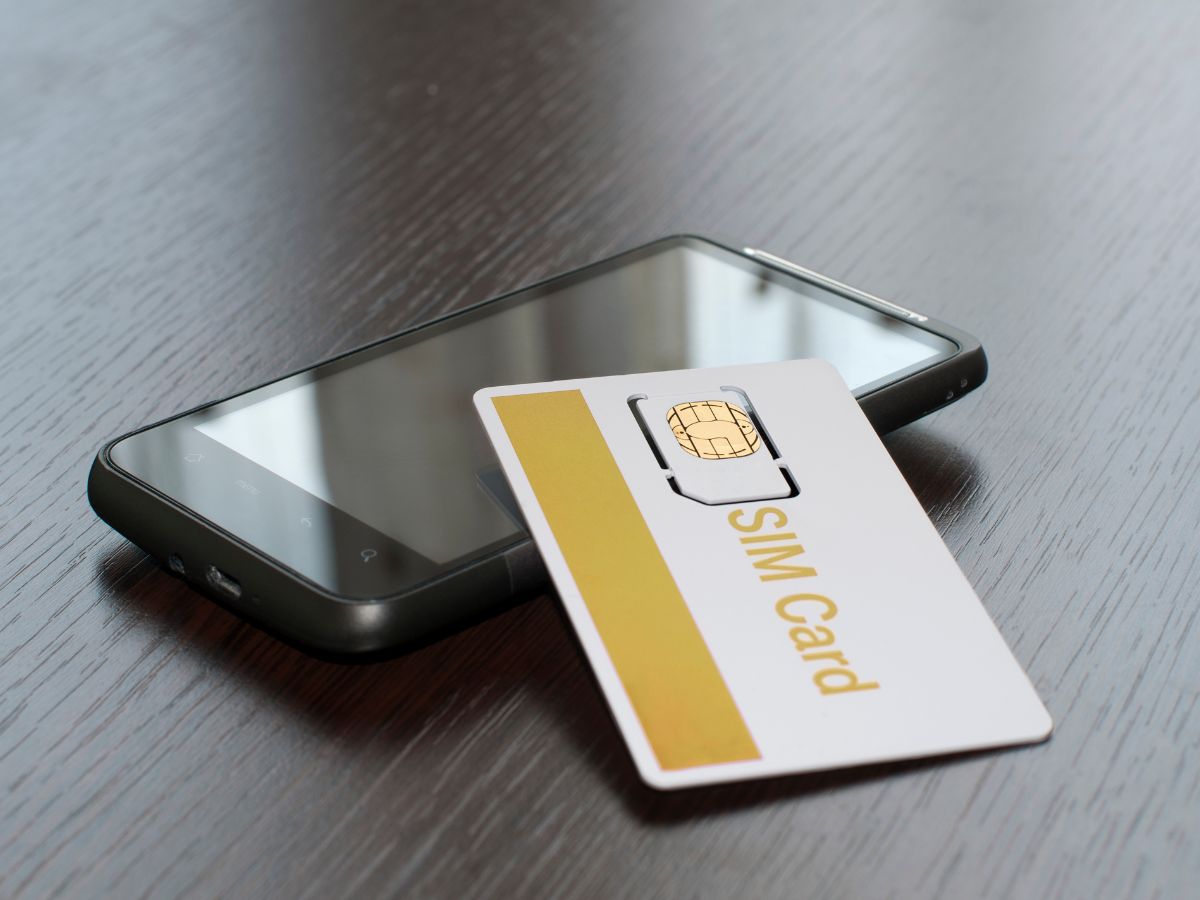Protecting Mobile Identity: How to Secure My SIM Card

In the linked world of today, our mobile devices have developed into extensions of ourselves, storing a lot of private and sensitive data. The SIM card, a tiny but capable chip that connects us to our mobile networks, is the brains behind mobile communication. Because those are the gateway to our digital lives, making sure of a secure sim card is more important than ever.
Your SIM card’s security is crucial for maintaining your mobile identification and securing your personal data. Unauthorized access to your mobile network may be made possible via a compromised SIM card, raising the risk of identity theft, financial fraud, and privacy violations. You may bolster your defenses against these dangers and keep control of your online presence by taking proactive steps to secure sim card.
The importance of your SIM card’s security must be understood in the context of the potential risks and threats that it may encounter. Social engineering assaults, SIM card cloning, and SIM card swapping are some of the methods used by malicious actors to compromise SIM cards. Through these actions, your mobile network may be improperly accessed, messages may be intercepted, and even your online accounts may be taken over. Knowing about these dangers will help you understand why safeguards and best practices need to be used.
There are a number of protections and best practices you may use to reduce the dangers related to SIM card security. These precautions include securing your device against SIM attacks, locking down your SIM card, using strong passwords and security questions, and remaining knowledgeable about the different ways your SIM card might be compromised. You may dramatically improve the security of your SIM card and lessen your risk of being a victim of cyber threats by putting these techniques into practice.
We will go into great detail about each of these topics in this blog post, giving you the information and resources you need to protect your SIM card. You may rest easy knowing that you’ve taken the necessary safeguards to defend your mobile identity and shield your personal data from unauthorized access by adhering to these best practices and precautions.
Protecting Against Socially Engineered Attacks
Understanding Social Engineering
It’s critical to comprehend social engineering in order to protect the security of your SIM card. Cybercriminals use the deceptive method of social engineering to trick people into disclosing private information or taking activities that could jeopardize their security. Instead of relying on technological flaws, it makes use of psychological manipulation of people. The first step in defending your SIM card from such attacks is understanding social engineering and recognizing it when it occurs.
Being aware of typical social engineering methods
In order to protect your SIM card, it is essential to be able to recognize basic social engineering approaches. Cybercriminals frequently employ a variety of methods, including:
- Phishing: Attackers pose as reputable companies through phony emails, chats, or phone calls to deceive people into disclosing sensitive information like passwords or credit card numbers.
- Impersonation: Cybercriminals impersonate reputable people or businesses using social media, emails, or phone calls to trick victims into disclosing personal information or taking activities that are advantageous to the attacker.
- Pretexting: Pretexting is a tactic used to acquire someone’s trust and obtain sensitive information by fabricating a situation. To trick victims into disclosing personal information, the attacker may assume the identity of a coworker, service provider, or authority figure.
- Baiting: Attackers lure people into divulging critical information or downloading malware-infected files by making alluring incentives, including freebies or rewards.
Tips to prevent falling victim to social engineering attacks
Take into account the following advice to safeguard your SIM card and defend against social engineering attacks:
- Be wary of incoming correspondence: Use caution if you get a surprise email, message, or phone call. Before sending any personal information, confirm the sender’s identity.
- Consider your options before clicking: Steer clear of downloading files from unreliable sources. Hover over links to verify their validity and make sure they take you to reliable websites.
- Verify requests: Before granting someone’s request for sensitive information or to take immediate action, independently confirm their identification through reputable sources.
- Enhance password security: Use strong, original passwords for each SIM card account, and change them frequently to increase password security. Useless information like names or birthdays should be avoided.
- Enable two-factor authentication (2FA): 2FA should be used to offer an additional layer of protection whenever possible. This calls for supplying a second verification factor in addition to your password, such as a code sent to your mobile device.
You may considerably lower your risk of falling victim to social engineering attacks and improve the security of your SIM card by exercising caution and taking these preventive measures.
Keep in mind that preserving your SIM card is essential for protecting your mobile identity and personal data. Maintain awareness of prospective hazards, exercise caution, and keep one step ahead of them.
How to Secure My Sim Card: Setting A SIM Card Lock
Defining A SIM Card Lock’s Function
A crucial first step in safeguarding your mobile identity and personal information is locking your SIM card. By requiring a password or PIN to access the SIM card, a SIM card lock adds an additional layer of security to your mobile device. In the event that your device is lost or stolen, a SIM card lock’s main function is to prevent unauthorized use of your SIM card.
Step-by-step guide to setting a SIM card lock
- Go to the “Settings” option on your mobile device to access your device’s settings.
- Look for the section containing the security or SIM card settings. Depending on the brand and type of your gadget, it could change.
- Look for the SIM card PIN or SIM card lock option. To activate it, switch it on or choose the available option.
- Choose a secure password or PIN and enter it. Make sure it is simple for you to recall yet challenging for others to deduce.
- Re-enter the PIN or password to make sure it still works.
- Once the PIN or password has been established and verified, save the settings.
The advantages and drawbacks of A SIM card lock
Setting a SIM card lock has the following security advantages:
- Device security: The SIM card lock stops unauthorized people from accessing your SIM card and using it to make calls or use data if your mobile device is lost or stolen.
- Data confidentiality: By activating a SIM card lock, you can be sure that the contacts and messages you store on the SIM card are kept private.
- Prevents SIM card swapping: Sim card switching is prevented with a SIM card lock, which acts as a deterrent to attackers who would otherwise change out your SIM card for their own to access your mobile network.
However, it’s important to understand a SIM card lock’s restrictions:
- Limited physical security: A SIM card lock primarily safeguards your SIM card and the mobile network services that are connected to it. It does not guard against unauthorized users accessing or using your device itself.
- Forgotten PIN or password: It may be difficult to access your SIM card if you forget your SIM card lock PIN or password. You might need to get help in these situations from your mobile service provider.
Your mobile device and SIM card are protected by an additional degree of protection when your SIM card is locked. You can strengthen SIM card security and keep control of your mobile identity by taking these precautions and being aware of their advantages and limitations.
How to Secure My Sim Card: Using Strong Passwords and Security Questions
The importance of secure passwords for SIM card protection
Strong passwords are essential for increasing SIM card security and safeguarding your mobile identity. A strong password serves as a deterrent to unwanted access, making it more difficult for cybercriminals to guess or crack your password and take over your SIM card or mobile device. You may dramatically lower the possibility of unwanted SIM card use and subsequent data breaches by using a strong password.
Best practices for creating strong passwords
For your SIM card to be secure, you must create strong passwords. Best practices to adhere to are listed below:
- Use passwords that are at least eight characters long and are complicated—a mix of upper- and lowercase letters, digits, and special characters—and that are both long and difficult. The security of a password increases with length and complexity.
- Avoid employing patterns that are commonly used, such as repeated characters or sequential digits. Automated programs that can swiftly crack such passwords are frequently used by cybercriminals.
- Don’t use the same password for several accounts or devices. Create a special password just for your SIM card. This keeps many aspects of your digital life from being impacted by a single stolen password.
- To protect the security of your SIM card, you should routinely change the password. A reminder can be set up to remind you to change your password every few months or as your mobile service provider may advise.
- Consider utilizing a trustworthy password manager to create and store your passwords safely. For any one of your accounts, including your SIM card, password managers can assist you in creating and managing secure, individual passwords.
Protecting security questions and responses
Many services use security questions as an additional degree of verification in addition to using secure passwords. Your security queries and responses should be protected by:
- Avoid giving responses that are widely known or that are simple to guess: Avoid giving answers that are widely known or that are simple to find on your social media platforms. Pick solutions that are tough for others to guess and known only to you.
- Consider utilizing responses that are unconnected but memorable to you as opposed to ones that are directly related to the security question. By doing this, further protection against social engineering assaults is added.
- Use distinct responses for every security question, just like you would for passwords. Avoid using the same responses on different services.
- Follow the same best practices for security questions as you would for passwords, such as changing them frequently and keeping them securely. Treat security questions like passwords.
You may considerably increase the security of your SIM card by using these procedures when creating your passwords and security questions. Always use strong passwords and secure security question and answer combinations to deter illegal access and safeguard your mobile identity and private data.
How to Secure My Sim Card: Additional Tips to Secure SIM Card
Avoiding suspicious links and phishing attempts
Being wary of dubious links and phishing efforts is one of the most important strategies to secure your SIM card. the following advice:
- Be watchful: Be wary of clicking on links in emails, texts, or social media posts, especially if they come from shady or dubious sources.
- Check the sender: Before clicking on any links, be sure the sender or organization is legitimate. To verify the validity of the message, get in touch with them directly using reliable channels.
- Verify URLs again: Before clicking a link, move your cursor over it to view the URL. Make sure they correspond to the website or service you anticipate using. Be wary of URLs that contain typos or strange characters.
- Report phishing attempts: Phishing attempts should be reported to your email provider or the relevant government if you come across one. This aids in preventing others from being a target of similar assaults.
Sharing personal information sparingly
Being cautious while disclosing personal information is another important aspect of protecting your SIM card. Think about the following:
- Only reveal your full name, address, phone number, or Social Security number if it is really essential and from a reliable source.
- Before disclosing any sensitive information in response to a request for personal information, such as SIM card information or account information, independently confirm the requestor’s identity.
- Avoid posting personal information on public social media platforms, such as your birthdate, home address, or phone number, to avoid social media oversharing. Limit the visibility of your personal information and your privacy settings.
Regularly monitoring your SIM card activities
For the purpose of quickly identifying any suspicious or unauthorized access, it is essential to routinely monitor the activity of your SIM card. Think about these techniques:
- You should frequently go over your call and message logs. Keep an eye out for any eerily familiar numbers or unusual activity.
- Keep an eye on your data usage by monitoring it. Unauthorized access or malicious activity may be indicated by unusual or excessive data usage.
- Allow your mobile service provider to notify you of changes to your SIM card, the transfer of your phone number, or the registration of a new device. You can stay updated on any changes to your SIM card thanks to this.
You can further increase the security of your SIM card by paying attention to these extra suggestions. Protect your mobile identity and personal information by being careful, proactive, and watchful.
Wrap Up
In conclusion, protecting your SIM card is essential for preserving your mobile identity and shielding your private data from dangers. You may greatly improve the security of your SIM card by being aware of the risks and taking preventive action, such as guarding against socially engineered attacks, setting a SIM card lock, using strong passwords, and being watchful for phishing attempts. Further bolstering your defenses are regular SIM card activity monitoring, firmware updates, and security patch maintenance.
Remember, retaining control over your digital life and keeping your SIM card secure requires a proactive and cautious attitude. To have a safer mobile experience, be informed, alert, and prioritize the security of your SIM card.







